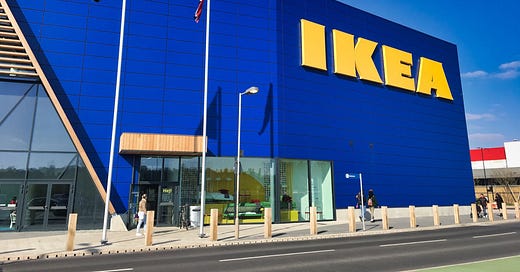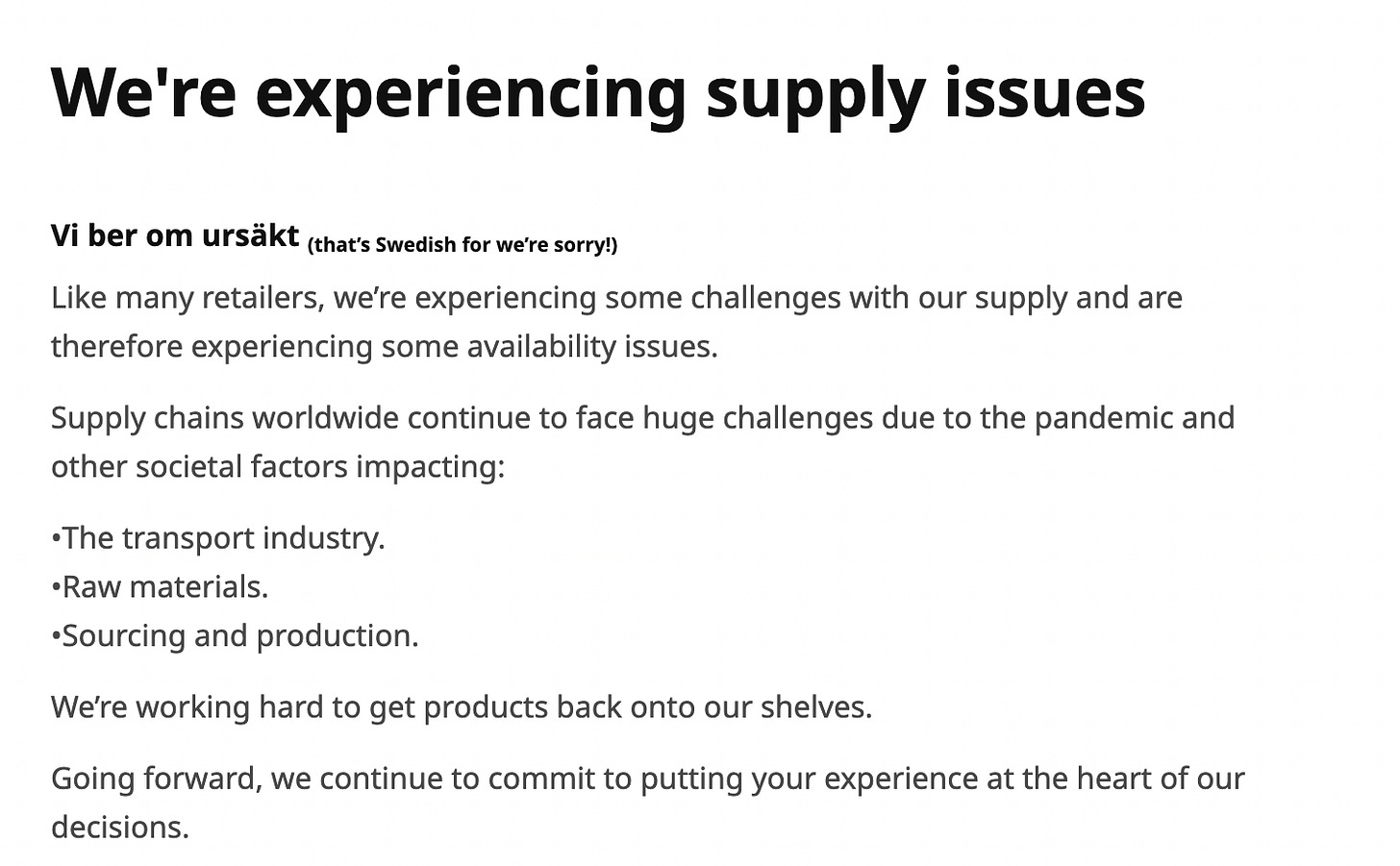A question that I have fielded continuously over the last few weeks is the following: “When will the constant product shortages we are all experiencing end?”
First, they came for our toilet paper and we said nothing.
Then, they came for our cars and still, we said nothing.
Now, they are coming for our Ektorp sofas—IKEA is facing a shortage in the UK—are we still going to say nothing?
Well, you know I can’t stay silent for too long so, you are probably asking yourself whether we will again go over each and every product and document its shortages. Obviously, yes. We supply chain people have to bask in our sun for as long as it shines.
But, the IKEA case is different.
Or is it?
This brings me to the following observation: While we tend to blame Covid for all of these shortages, I do not think this is indeed the case. It seems Covid more resembles the supply chain X-Ray or MRI. It exposes deep issues in our systems. Issues lurking before the pandemic. Covid merely created the pressure that accelerated their exposure.
The IKEA Shortage
On their website, IKEA shares the following statement (I’m using a screenshot to retain the Swedish humor):
When explaining the issues, an IKEA spokesperson said that "What we are seeing is a perfect storm of issues, including the disruption of global trade flows and a shortage of drivers."
The scarcity of raw material and production issues are not new to longtime readers of this newsletter, but what I would like to focus on, from IKEA’s statement above, is the shortage of drivers.
Why is there a shortage of drivers?
Two reasons.
The first is very much related to what we have seen in the US: people have used Covid to ask themselves what they really want to do with their lives. The same shortages of workers in restaurants and hotels now plague the Heavy Goods Vehicle (HGV) driving capacity. The total number of people in the UK with HGV licenses is 516,000. But the latest data from the Department for Transport in the UK shows that only 278,700 HGV drivers were actually employed in 2020. This means that while many drivers have invested in getting an HGV license, they are not using it.
The issue does not just affect IKEA; rather, the biggest casualty of this shortage is the waste management business. Just last week, the BBC reported that the Bedfordshire garden waste collection disruption continues.
Why are drivers that hold such a license not interested in driving and collecting waste? In short, due to lousy pay and working conditions. And while I like to focus on the gig economy and the shortage of drivers experienced by Uber and Lyft, the shortages we see in the UK are just an illustration that this is a much broader problem.
The Impact of Brexit
The second reason is Brexit. Yes, Brexit!
After “Covid,” “hurricanes,” “climate change,” and “just-in-time,” I am sure you didn’t have Brexit on your “stockout Bingo Card.”
Why is Brexit one of the potential causes?
A good amount of HGV drivers in pre-Brexit Britain came from other EU countries. After the vote, many started to flee the UK, as it became a less appealing market. Then the pandemic hit and even more drivers fled. Covid made movement between countries harder, so many chose to stay in their home countries. Furthermore, in conversation with Polish and Hungarian drivers on why this is the case, the Financial Time reports:
“For truckers, that meant endless paperwork, including customs procedures they were never trained for and queues at the border. Other issues included the need to take UK driving exams that many truckers did not have the language skills for, along with a more hostile attitude to foreigners in Britain.”
Those who supported Brexit believed that local drivers would replace those who left, but during Covid, the HGV training programs were shut down, blocking an incoming stream of drivers. There is now a nine-week wait until the first test.
Firms can still potentially use foreign drivers, but given the tax implications, this is now more expensive. And to make matters worse, there is now a global shortage of HGV drivers.
The point of this post is to show that each product shortage has a different story:
Toilet paper shortages were driven by an inflexible supply chain and hoarding behavior.
Car shortages are caused by insufficient capacity for semiconductors.
Couches are now in shortage because there is no one to transport them!
In short, each stockout is unique.
But they are not unique in how each one reveals the lack of long-term thinking and planning at the systems level: both firms and governments.
This brings me to my main point: precisely because these issues are structural, I do not see an end in sight. We find a solution to one type of product, only to see shortages emerge in another type of product or service.
Unless we start building more resilient systems, firms and states—ones that anticipate and hedge against an increasingly volatile future—we will keep experiencing these shortages and stockouts.
As a final thought, maybe it does make sense that if the British cannot keep up with collecting the trash, they should also not allow people to buy things. Perhaps the shortages at IKEA are not all that bad...





Our supply chain is performing just as designed. Or not designed. ‘And then a miracle occurs’ is not planning, foresight, or strategy.
I recall an axiom from your class: Your operation strategy is aligned when your customer is willing to pay for the operational costs (or something like that). How do you think about that today in respect to resiliency?
Customers are, today, probably willing to pay extra for resilient supply chains that have inventory. But the minute that the market is unconstrained, the customers are no longer willing to pay and resilient supply chains are at a cost disadvantage. It takes time and energy (and $$$) to transform a supply chain from lean to resilient and back again.
What firms would be incentivized during happy days to proactively invest in resiliency and to what extent? What are the characteristics of those customers that make those firms unique? The only thing I could think of was organ donation supply chains but I'm not sure that's a good market-driven example.